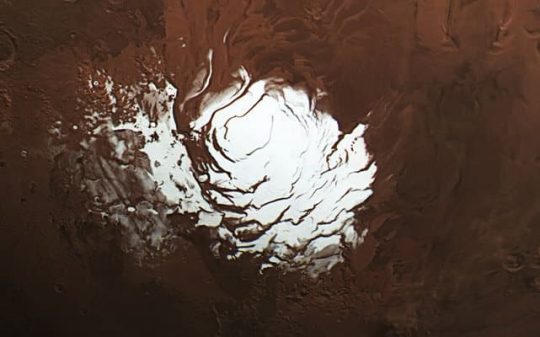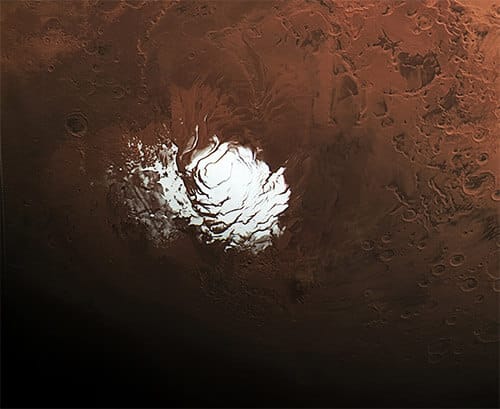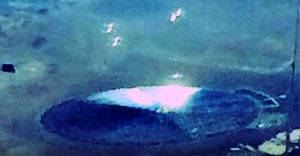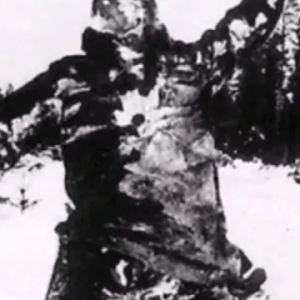
We’ve been working hard to create the best UFO, Alien & Paranormal stories for several years now and we’re excited to share that we just recently launched our youtube channel. We’re releasing one new alien, ufo video each day. Make sure to head over to the UfoHolic youtube channel, subscribe and tap the bell in the top right for notifications to see new videos when they come out. Subscribe to our Ufo videos by clicking here.
This newly released photo of the Red Planet provides an amazing overview of its South Pole, revealing a massive white dot towards the lower end of the picture.
It was captured by the European Space Agency’s Mars Express spacecraft on February 25, this year, but it was released to the public only last month.
The ice cap is formed of frozen water and frozen carbon dioxide and it varies in shape along with Mars’ seasons. This particular photo appeared as a result of a “happy accident”, ESA officials said. A photo showing the Martian soil this wide is very rare and unique because Mars Express usually takes photos pointing straight down towards the planet’s surface.
The picture was taken at an altitude of about 186 miles, as this is the limit that the spacecraft can reach during its elliptical orbit around Mars.
The white icy dot might seem fair enough in dimension but it gets even bigger as seasons change. This specific picture shows the South Pole of Mars during the summer period, with the ice cap expanding considerably during the winter season.
Above the South Pole is an area marked by huge craters forming the ancient southern highlands of the planet, where life presumably flourished in the distant past. Also, a considerable part of the Hellas basin can be observed at the top left of the image, thought to be about 5 miles deep.
Seeing this vast portion of ice forming on the surface of Mars makes it hard to believe that this planet is dead, with no living organisms that had found refuge under the dense layer of ice or even on the surface.
As far as the evolution theory goes, the probability for living organisms to adapt to new conditions of life by developing new features into their system that would allow them to further breathe or feed, despite of their environment, are quite big.
If Mars had at one point ideal conditions for life and if living beings actually existed on this planet, it would be hard to believe that all of them had vanished. A more plausible theory involves the idea of survivability and adaptability and what better place to take refuge than the everlasting ice cap area of the South Pole?
Whatever happened to the once hospitable planet Mars we can only speculate, but as new evidence emerges, the possibility of a former Martian civilization takes shape and we are not far from possibly discovering the old remnants of a buried culture, either under the ice or under the arid and dusty soil of the Red Planet.












